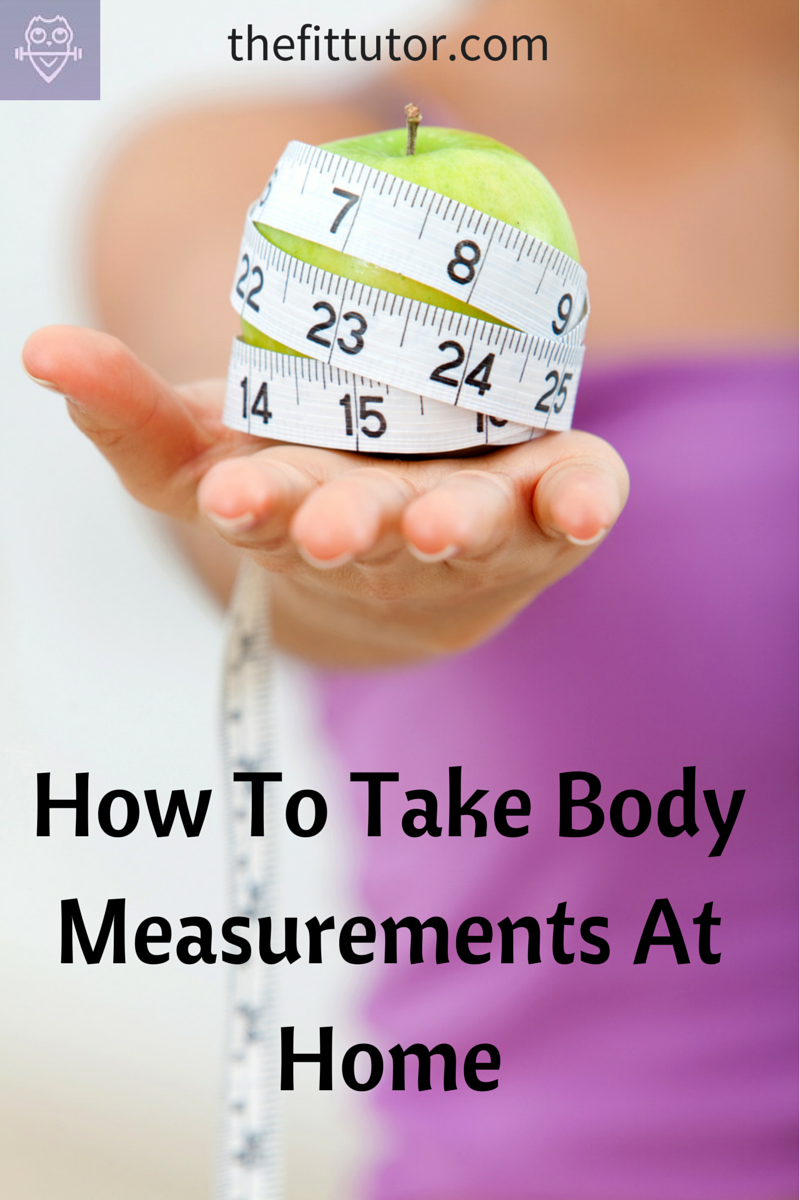Now that you’ve started this endeavor of living a healthy lifestyle, it’s important to track your progress. We’ve all faced that excitement of losing a few pounds, only to see it come back on a few days later. Here’s how to take body measurements to get a more accurate assessment of your progress, and see if your exercise and eating routine are working!

The Scale Can Lie
Most people live and die (or should I say start and quit) by the scale, but it can lead us astray when it comes to our fitness progress. I highly recommend weighing yourself at least once a week, but keep in mind these factors can affect the number you see:
- Water weight: your hydration level can affect how much you weigh, but don’t allow yourself to get dehydrated just to see the number drop.
- Carbs: for each gram of carbohydrates you store, your body also stores 3 grams of water. You need carbs, but try to get them from fruits and veggies instead of pastas or breads.
- Muscle: 1 pound of muscle is the same as 1 pound of fat, yes, but 1 pound of muscle looks much differently. If you’re lifting weights, which I suggest you do, you should gain muscle and lose fat, which could actually increase the number on the scale.
- Sodium: Our brain is extremely concerned with our sodium to water ratio. If our sodium intake increases, it will hold on to more water, which will give an inaccurate number on the scale.
- That time of the month, ladies. There’s so much happening in your body it’s hard to get an accurate picture of your weight and health. Just avoid the scale (and overeating) during that time.
By taking measurements and photos, you can have a better idea if your new workout regime and whole foods diet is helping you reach your goals.
How To Take Body Measurements
The Equipment
You will need this printable body measurement chart, measuring tape, and mirror, if available.
The Schedule
There are a lot of theories, but here at The Fit Tutor we try to simplify healthy living for busy women. With that in mind, I recommend doing all measurements at least once a month, with a better goal being every 2 weeks. You can also pick and choose which ones you do, depending on your goals and time.
Pro Tips
- Each measurement will go all the way around the specified body part. Try to keep the tape parallel with the ground on horizontal measurements, and check your accuracy in a mirror if doing it alone.
- The tape should be placed directly on the skin or clothing, but don’t press it down so hard that it indents the skin.
- Wear the same clothes or no clothes each time you measure.
- Try to measure under similar conditions each time: same time of day, before a workout, etc.
- Measure each area 2-3x if you have time, and take the average of the measurements.
- Take detailed notes or pictures of where you measured to help ensure accuracy.
- You only need to do one side of the body for certain measurements (thigh, arm, etc), but you can do both sides if you want.
The Protocol
Starting from the top down:
Neck
Wrap the measuring tape around the largest part of your neck.
Shoulders
Have both arms down at your side, and measure around the largest part from shoulder to shoulder.
Chest
Place the measuring tape across your nipples and wrap around your back, keeping the tape parallel with the floor.
Arm
Measure around your bicep starting midway between your armpit and elbow, or at the visible peak of your bicep.
Waist
Standing with your arms at your side, measure the narrowest part of your torso above your belly button.
Abdomen
Stand up straight, relaxed. Measure across your stomach, in line with your belly button.
Butt/Hips
Stand up straight, feet together. Measure at the largest part of your butt.
Thigh
Stand with your legs slightly apart. Measure at the largest part of one thigh, just below your butt.
Calf
Measure horizontally at the largest part of calf, about halfway between ankle and knee.
Any other “trouble zones” you want to keep track of
Just make sure you make a detailed recording of where you measure so you can replicate it.
Waist to Hip Ratio
Divide your waist measurement by your hip measurement. Read more about the health risks associated with this ratio and why you want to keep track of it.
Photo
Try to do a picture from the front, sides, and back, and any other angle you feel is important. Make sure to take progression photos every time you measure. These pictures need to be in the same poses and lighting as the original. Keep them in a safe place, and don’t share them until you’re ready.
Measuring Progress
If you don’t notice any results on the scale or with measuring (within a reasonable timeframe), you’ll need to switch something up. Talk to your doctor, see a personal trainer or nutritionist if you can.
Look at what you’re eating. Take a week and log your food intake via MyFitnessPal or with a photo diary. Maybe you’re eating too much- or not enough. Can you add in one more workout day, increase the challenge of what you’re doing, or add 5 minutes on to a workout? Are your workouts too easy or weights too light? Are you sitting all day long without moving much?
We Can Help!
If you’re not a Fit Tutor member, consider signing up. You get workouts designed by and instruction from a nationally certified trainer, and nutrition help and accountability are included. I would love to help you get those results you’re working for!
If you are making progress, way to go!!! Keep it up! Invite a friend along for the journey and help her change her life as well.
Let me know any questions you have in the comments!
Allison


Comments are closed.